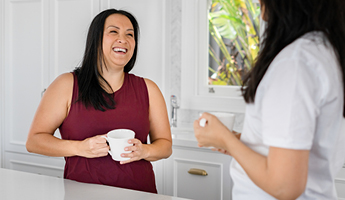Overflow incontinence refers to the involuntary leaking of urine because of an over stretched bladder or a urethral blockage (i.e., The hose that allows urine to flow freely out is impaired in some way). Overflow incontinence can happen to both men and women at any age.
Some types of urinary incontinence are a little harder to spot, and less common than stress and urge incontinence. One of those is overflow incontinence.
What are some of the symptoms of overflow incontinence?
The most common causes or triggers for this type of incontinence are:
Existing medical conditions that affect the nerves (multiple sclerosis, diabetes)
A blockage in the urinary tract (from a bladder stone, tumour/mass, prolapse)
Trauma to the urinary tract (i.e., after catheter removal)
Vaginal childbirth
Certain medications
In this type of incontinence, most women describe a constant dripping of urine and only being able to release small amounts of urine despite straining. Women may also experience bladder fullness after doing a wee, slow urine flow and recurrent urinary tract infections.
In order to diagnose overflow incontinence a health professional will take a full history and likely perform physical tests such as urine analysis and uroflowmetry. This calculates the flow rate of your urine when you do a wee.
How to treat overflow incontinence?
Treatment involves targeting the underlying cause. Professionals involved in the management of overflow incontinence include your GP, a urologist and pelvic floor physiotherapist. If you are not sure how to find a pelvic floor physio, you can search for one in your local area using your postcode here
After acute medical conditions are ruled out or treated, management may include:
- Bladder education
- Bladder retraining (including timed toileting)
- Catheterisation
- Medication
If you are interested in knowing more about bladder education and healthy bladder tips you can visit our post here
The bottom line
Overflow incontinence is not as obvious as stress or urge incontinence. There are many causes for overflow incontinence, some which require urgent medical attention. If you suspect overflow incontinence it is important to discuss this with your doctor for further investigation.
This content is general in nature and not designed to substitute professional medical advice, diagnosis, or treatment.
Written for Poise by Caitlin Dunsford. Caitlin is a practicing Physiotherapist, with special interest and further training in Women's Health and Continence.







